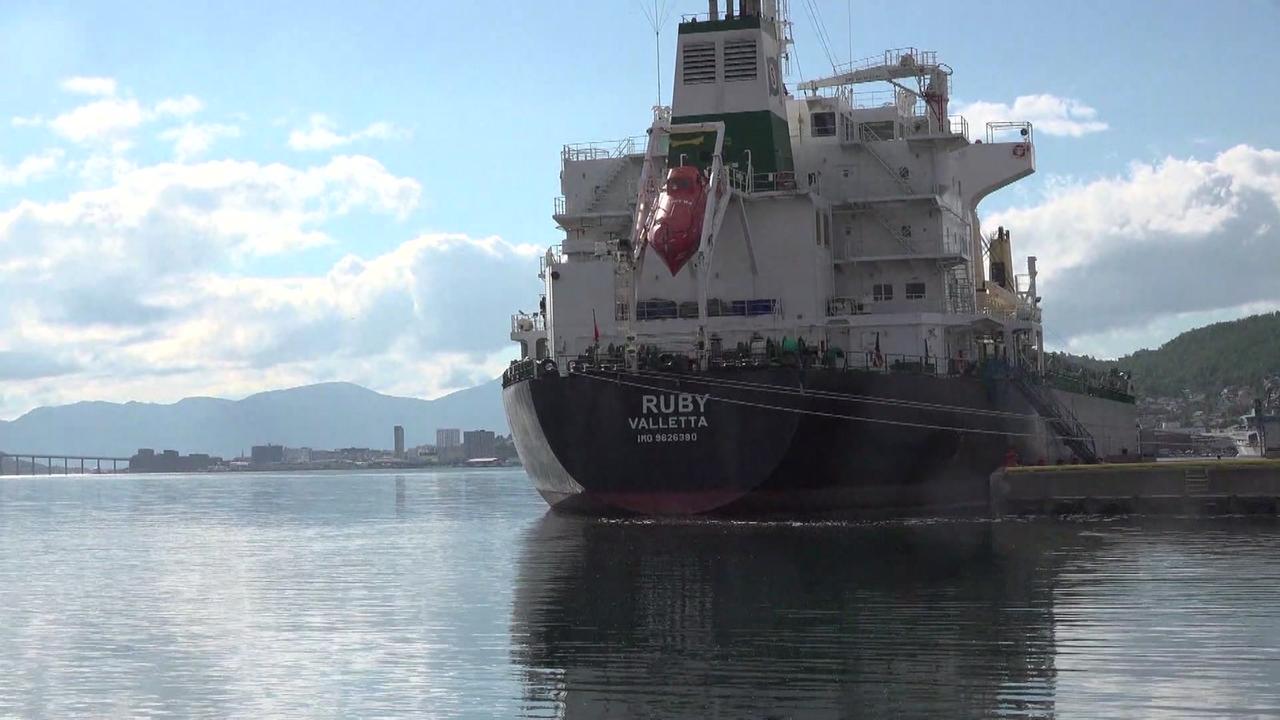The cargo ship “Ruby” has been anchored off the English coast for weeks, fully loaded with explosive ammonium nitrate. The case poses a number of mysteries – and there is much speculation about Russia's role in it.
The Maltese freighter “Ruby” has been roaming European waters with explosive cargo since the end of August. Three weeks ago the damaged ship anchored off the Thames Estuary. There is speculation about mysterious backgrounds that are part of Russia's hybrid warfare. What are the facts and how should they be classified?
The “Ruby” left Kandalskzha in the south of the Kola Peninsula on August 22nd. Kola lies to the east of Scandinavia and belongs to Russia. Immediately after setting sail, the ship hit a shoal. The “Ruby” apparently got free again under its own power. She continued the journey around Scandinavia initially to Tromsö on the Norwegian northwest coast.
Dangerous cargo?
20,000 tons of ammonium nitrate are loaded. This is an essential component of fertilizer. Ammonium nitrate was also the chemical that exploded in the port of Beirut four years ago. More than 200 people died and parts of the city and harbor are still destroyed today.
This explosive power led to speculation about the danger of the “Ruby”. In fact, ammonium nitrate requires special circumstances and great heat to react. If some precautionary measures are taken, ammonium nitrate can generally be transported by sea vessels without any problems in accordance with international safety regulations. The Norwegian Maritime Authority (NMA) confirms that the Ruby's cargo poses no particular danger.
According to the state-run “Germany Trade & Invest” agency, Russia is allowed to export ammonium nitrate to third countries. Ships have free passage in European waters. However, economic sanctions stipulate that Russian ammonium nitrate may not be imported into the EU. Therefore, the initially stated destination of the “Ruby” is strange. She wanted to go to the Canary Islands, which belong to Spain and therefore to the EU. The cargo should not have been unloaded there.
Control in Norway
The behavior of the ship's command is also unusual. After the accident, she did not head for the nearby port of departure. After a week-long journey through often turbulent seas, the ship's command declared the ship to be unable to maneuver off Norway.
The Norwegian Maritime Authority and the renowned ship TÜV DNV examined the ship for a week. “There was damage to the rudder, propeller and some cracks in the hull,” said NMA spokesman Dag Inge Aarhus. “As far as we know, the damage has no impact on the cargo.” All safety certificates were available, only a labor law certificate for the staff was missing. After the DNV safety experts determined that the “Ruby” could go to a shipyard for repairs, the Norwegian authorities cleared the ship to continue its journey. To be on the safe side, a tugboat was ordered to accompany them.
Strange damage
The inspection also examined the engine room, controls and emergency control system. There were no defects. Nevertheless, according to press reports, the captain of the “Ruby” soon reported that the machine had completely failed. It didn't last long. The ship went on an errant journey, first towards the Baltic Sea, then towards Malta in the Mediterranean. The “Ruby” is officially registered there. But Malta banned early entry.
At the end of September, the “Ruby” anchored in the North Sea near the mouth of the Thames. According to the British Maritime and Coastguard Agency, a supply ship brought new fuel. The specialist service “Seatrade Maritime News” reports that fresh food also came on board.
The “Ruby” has been anchored off the Thames Estuary for almost a month.
According to official investigations in Norway, the damage to the ship does not appear to be serious. “As long as the Ruby is loaded, it cannot be repaired,” says Bremen captain Kai Ebert. Ebert went to sea for decades, trained as a nautist at the university and, as a pilot, deals with all kinds of ships on a daily basis. “First of all, a fully loaded ship is too heavy to be dry-docked in a dock,” says Ebert. “Secondly, you can't weld with charged ammonium nitrate.”
The load must therefore be cleared before repairs can be carried out. Negotiations are underway with the English authorities, Roger Gale, a member of the British House of Commons from the southeast coast of England, recently announced via the short message service X (formerly Twitter). He was referring to a conversation with Shipping Minister Mike Kane.
What is striking is the calmness with which the Norwegian and British authorities, as well as the Cuxhaven “Maritime Security Center”, react. Everyone emphasizes that the “Ruby” is being monitored, but there is no reason to intervene or worry. If there really was a threat of disaster, the nearest coastal state would have to react. The International Maritime Organization (IMO) stipulates that ships in need of help must be given access to refuge ports.
Russia in the background?
The “Ruby” is a smaller cargo ship with a length of 183 meters and a width of 28 meters. It was put into operation twelve years ago and is therefore quite new. Photos show a well-kept looking ship. It belongs to “Serenity Ship Management” and is chartered to “Solar Gulf Shipping”, which was founded two years ago. Both companies are based in the same commercial building in Dubai. The “Serenity Ship Management” is not registered in the commercial register of the United Arab Emirates or Malta, where the “Ruby” is registered. The company did not respond to requests.
The entire circumstances and processes raise doubts as to whether the “Ruby” ever wanted to export ammonium nitrate and whether it was seriously damaged. There is speculation in the media that Russia wants to test the reaction of Western states and the public with an allegedly dangerous ship. The possibility of espionage on critical infrastructure during allegedly accident-related layovers and slow transfers is also discussed.





